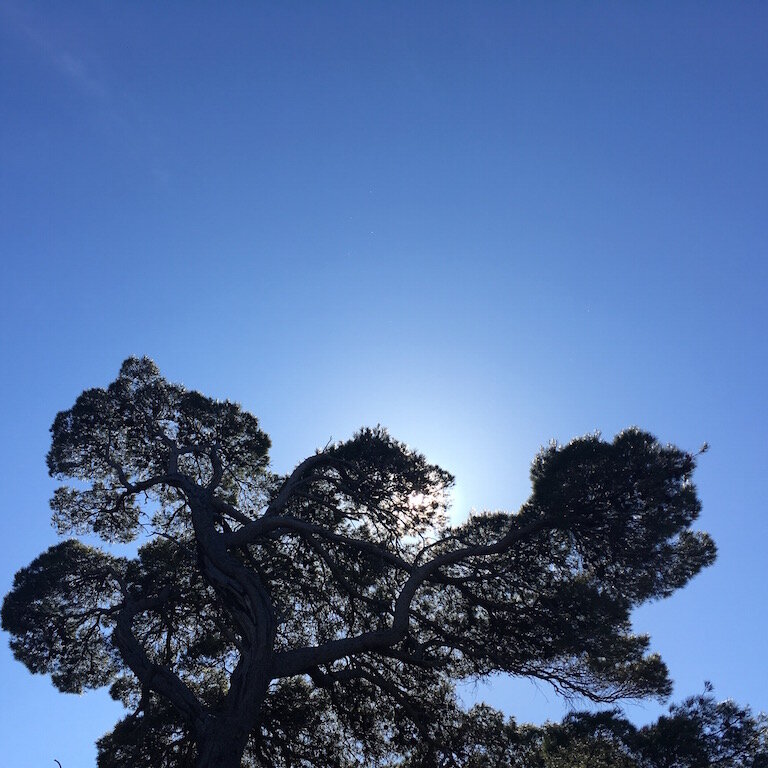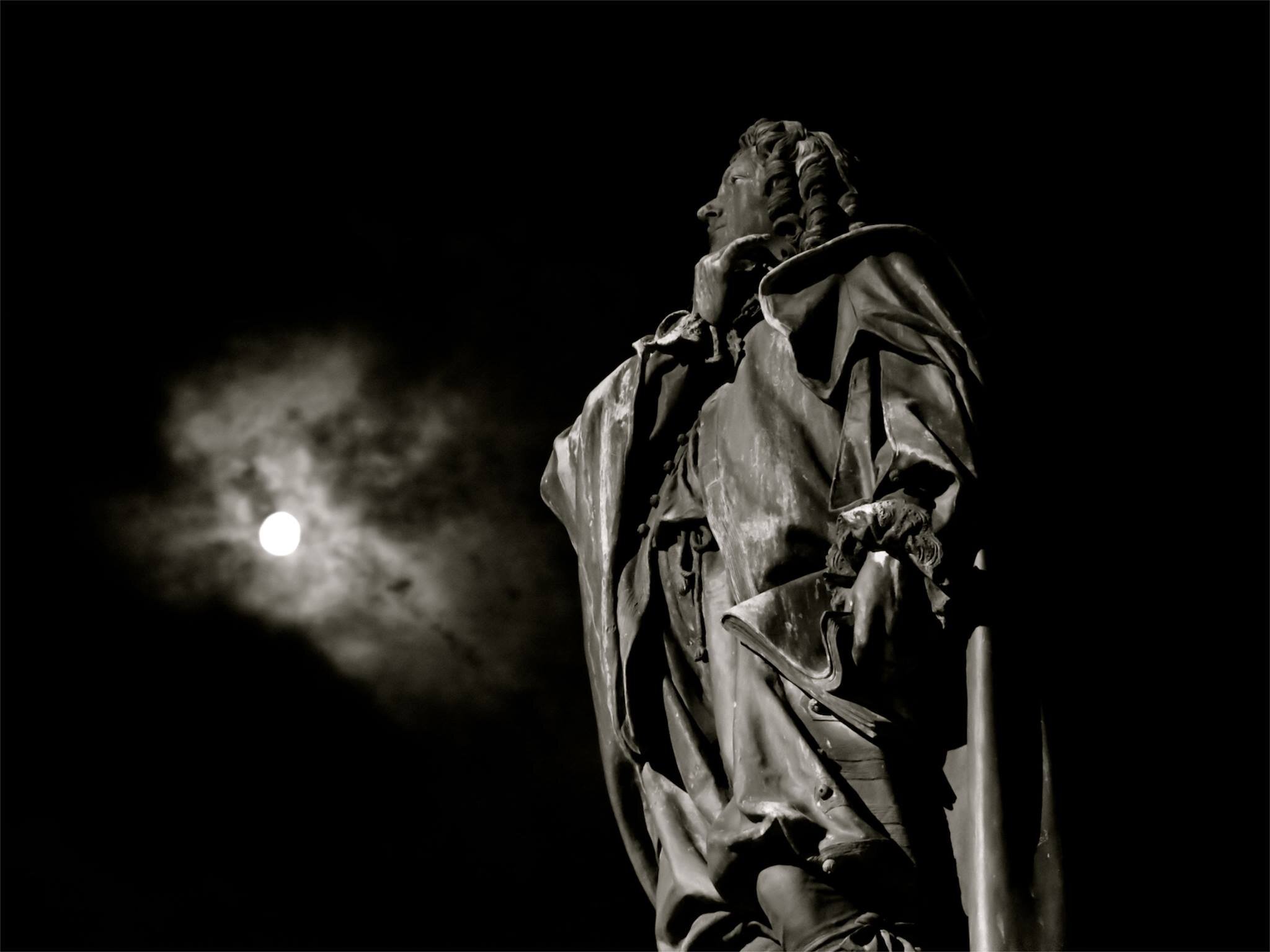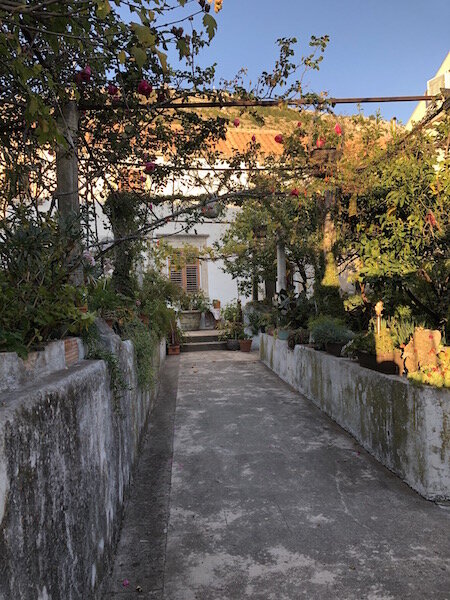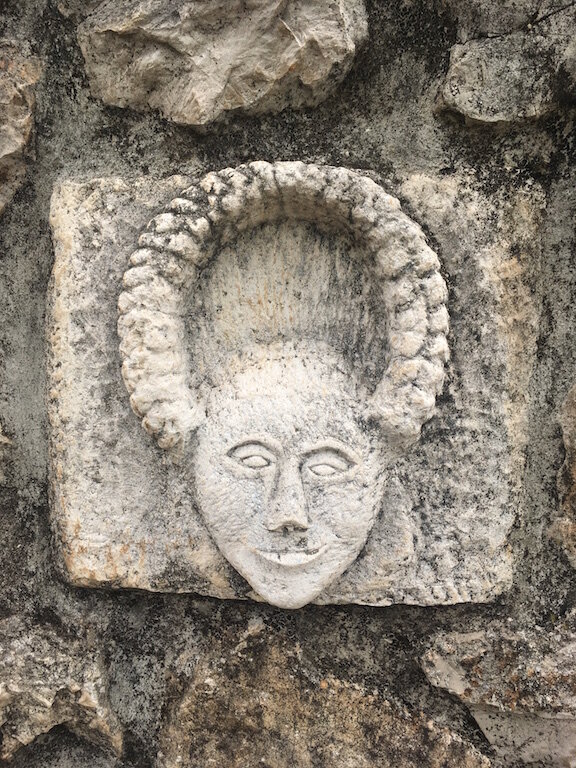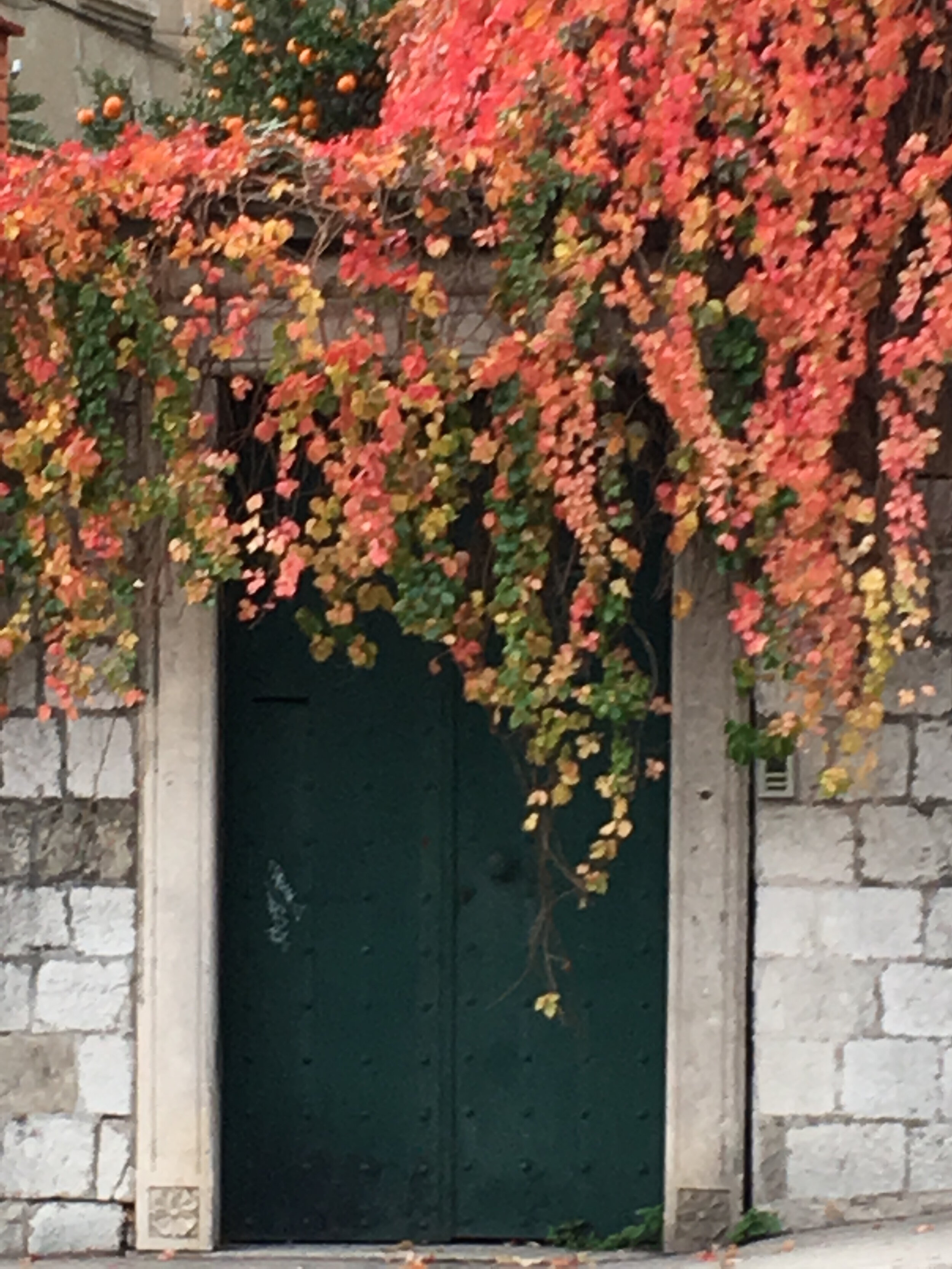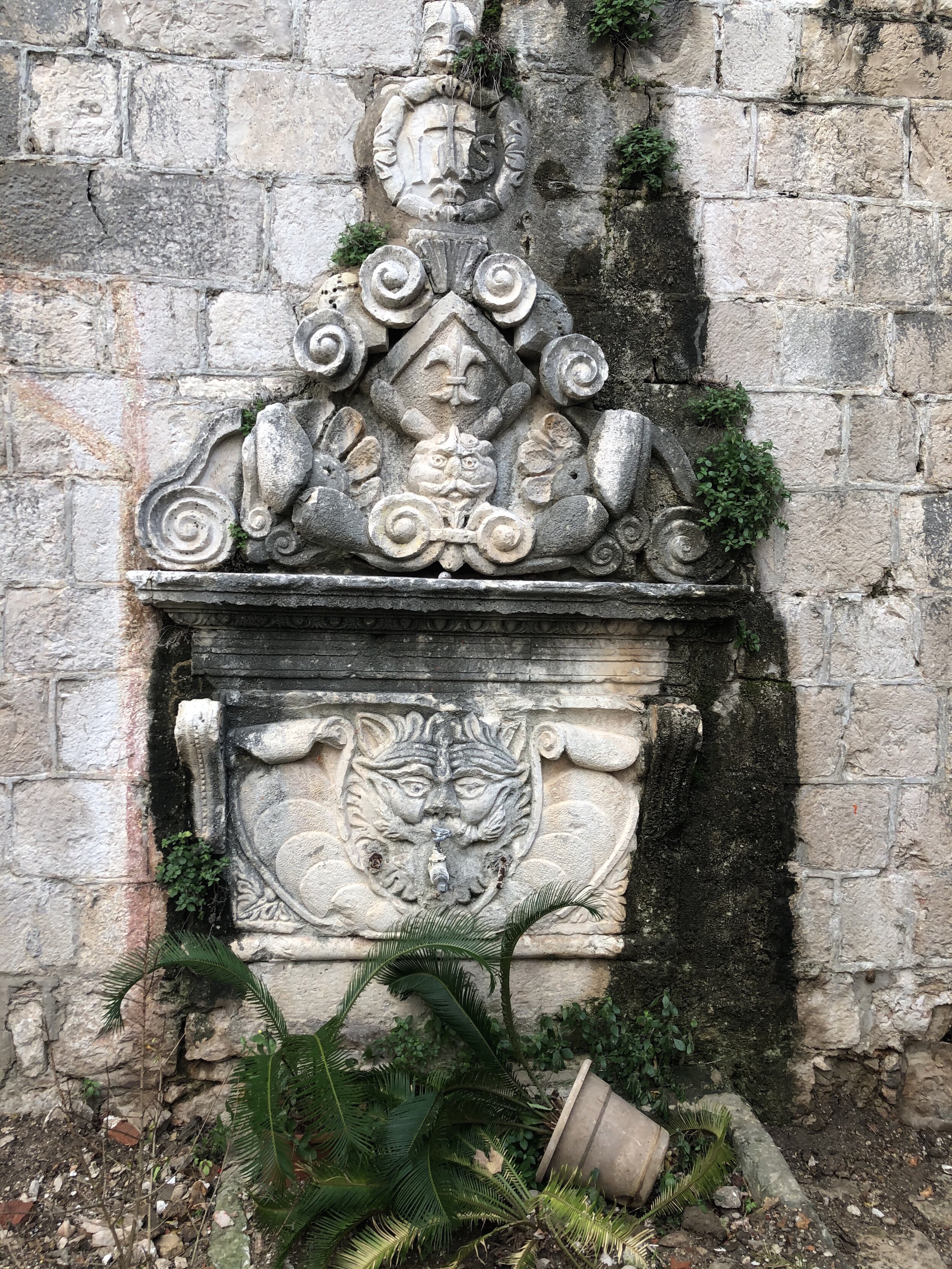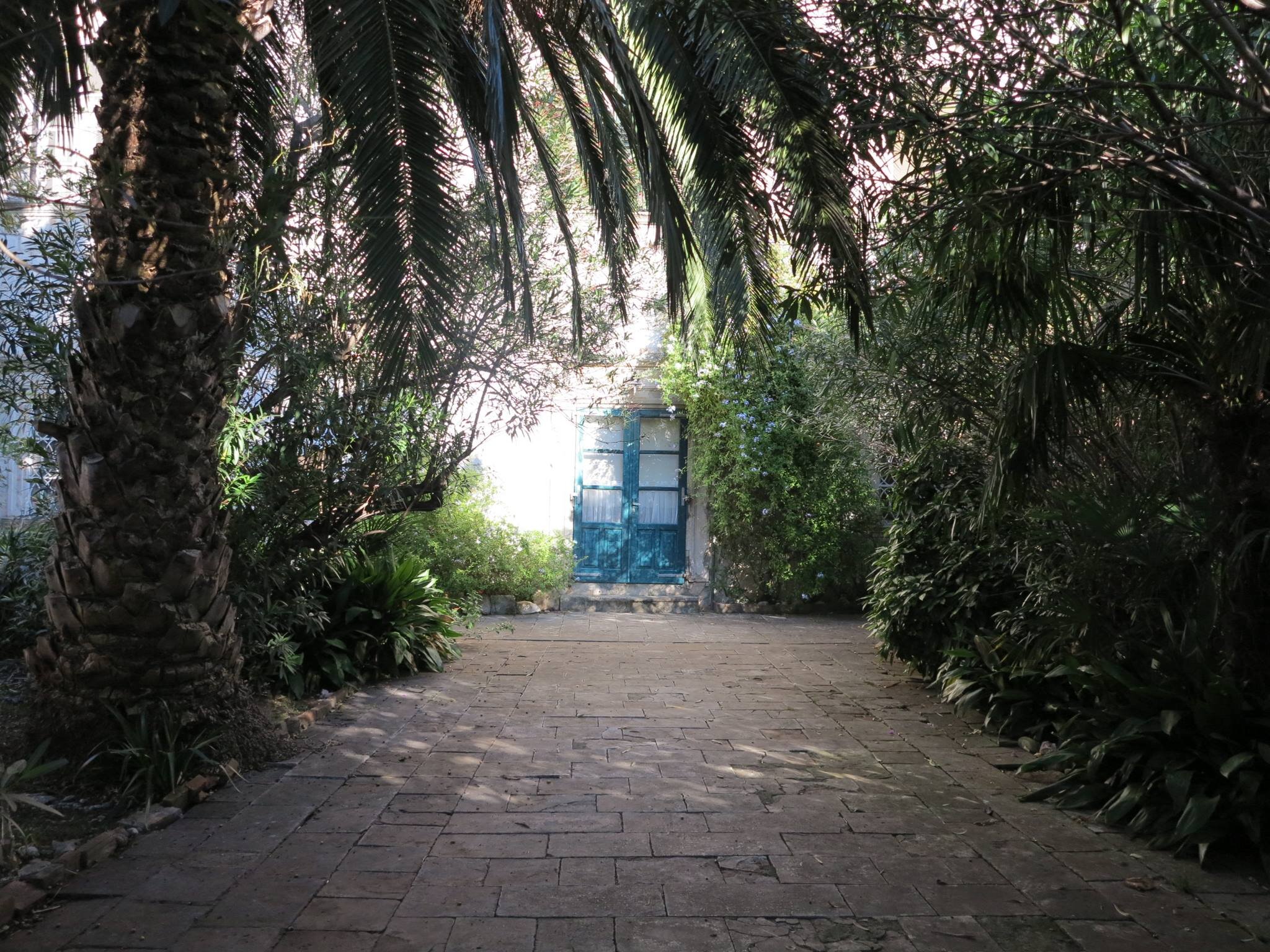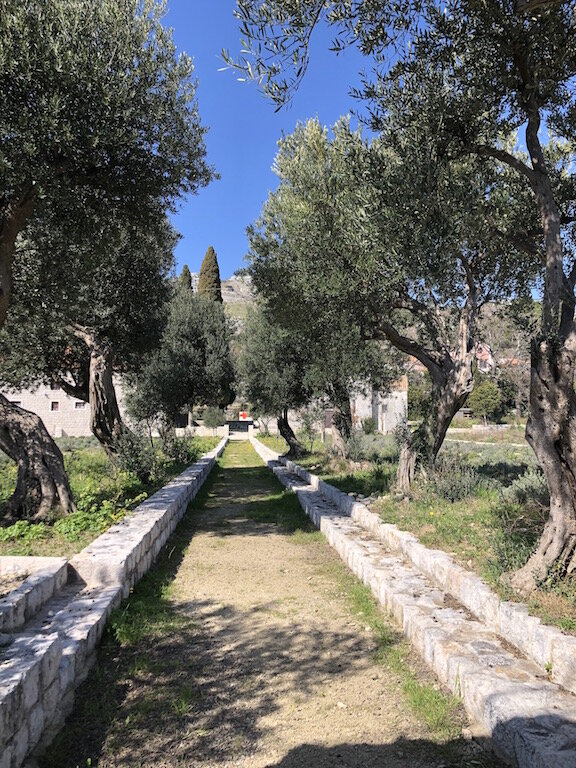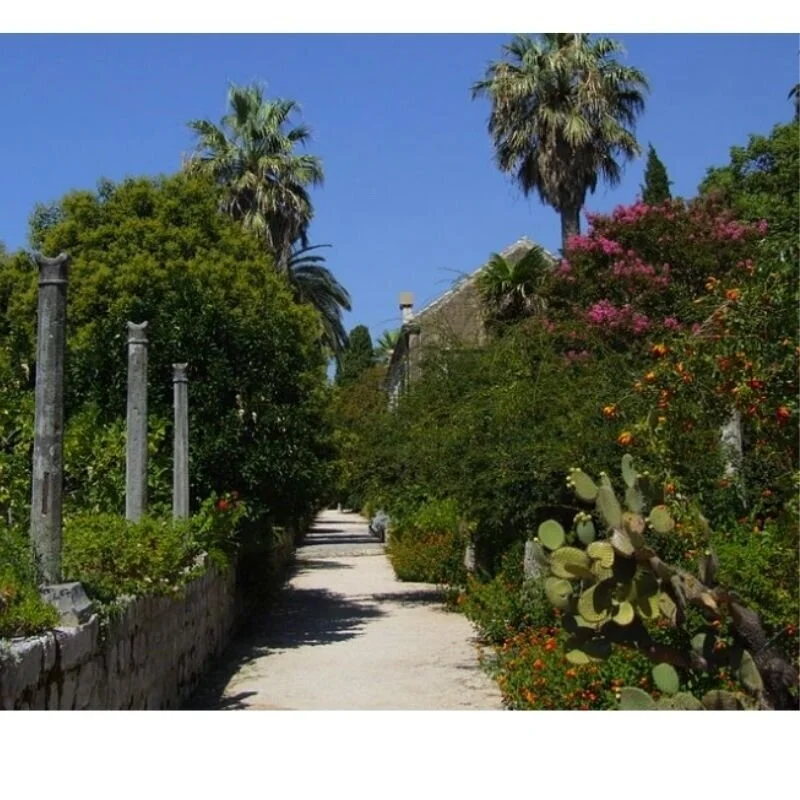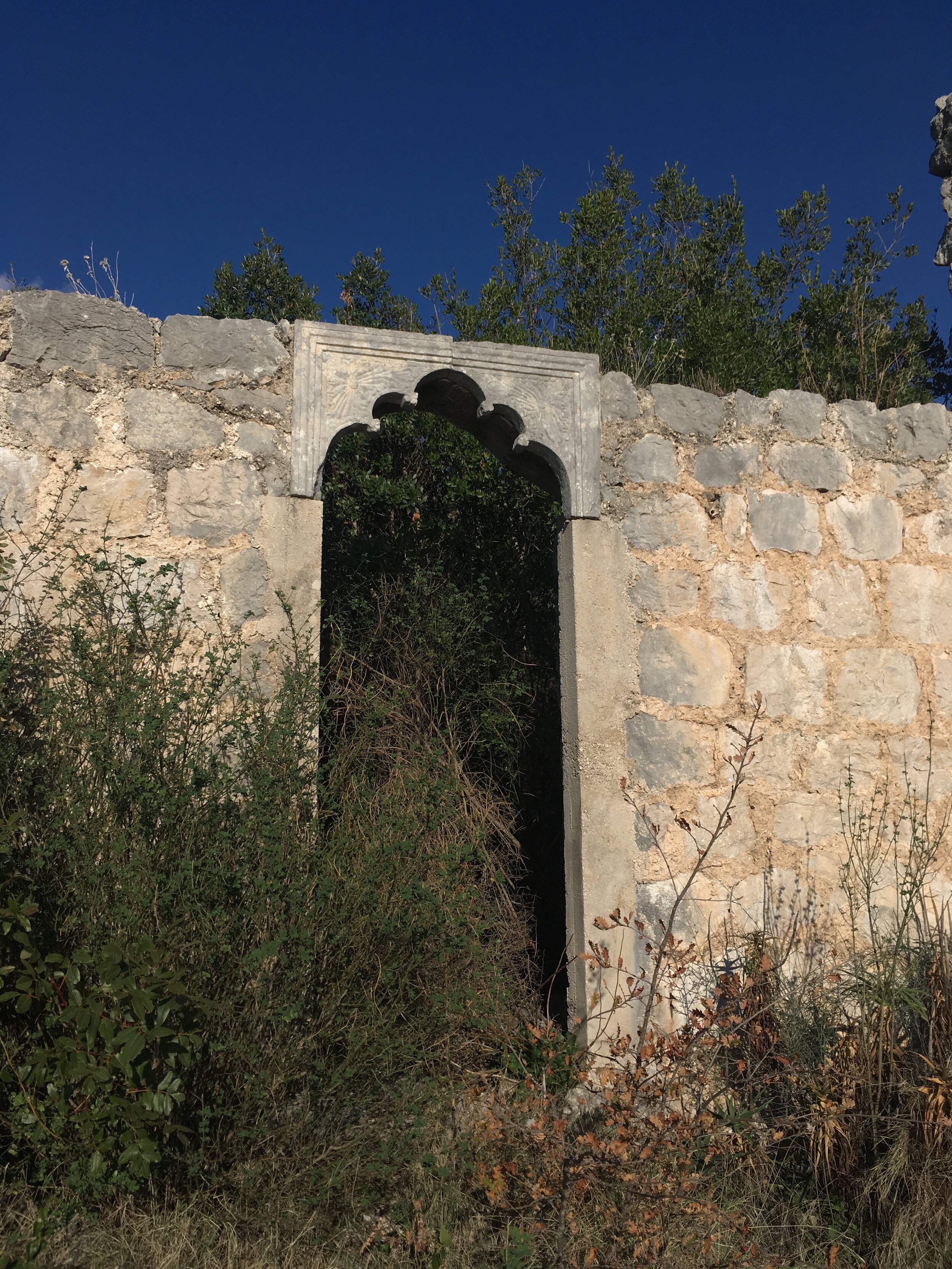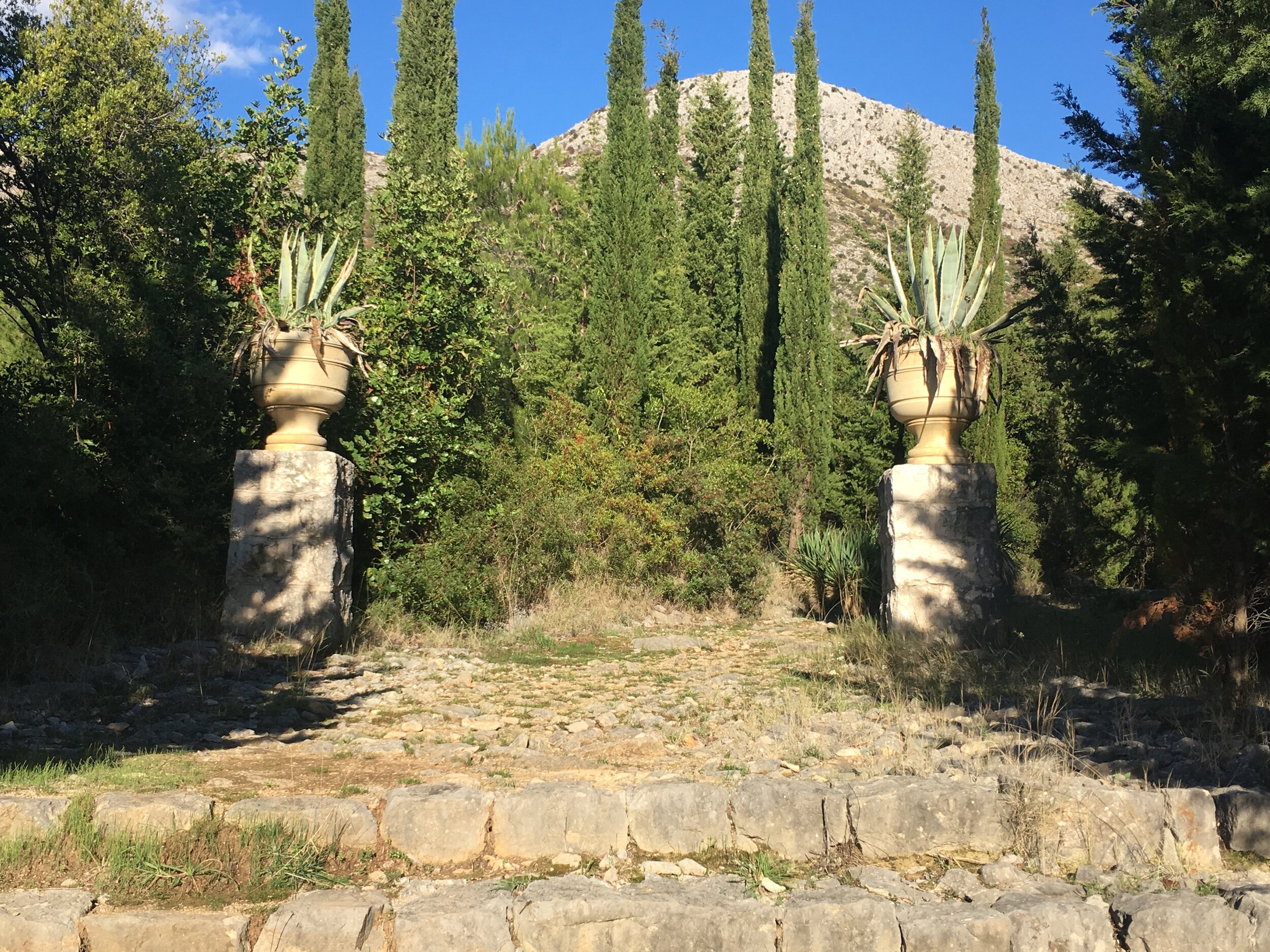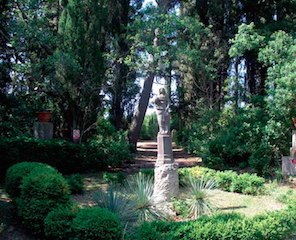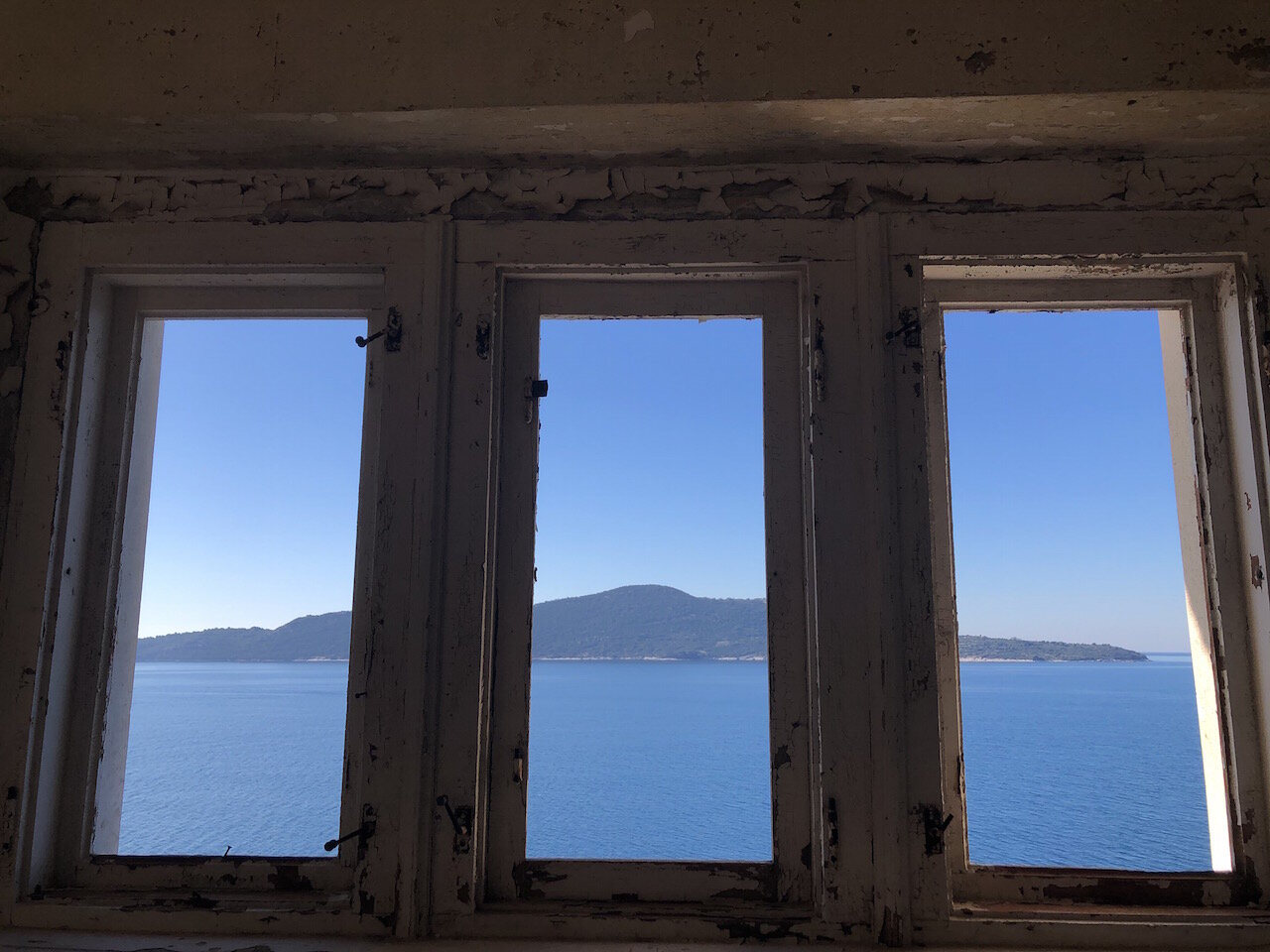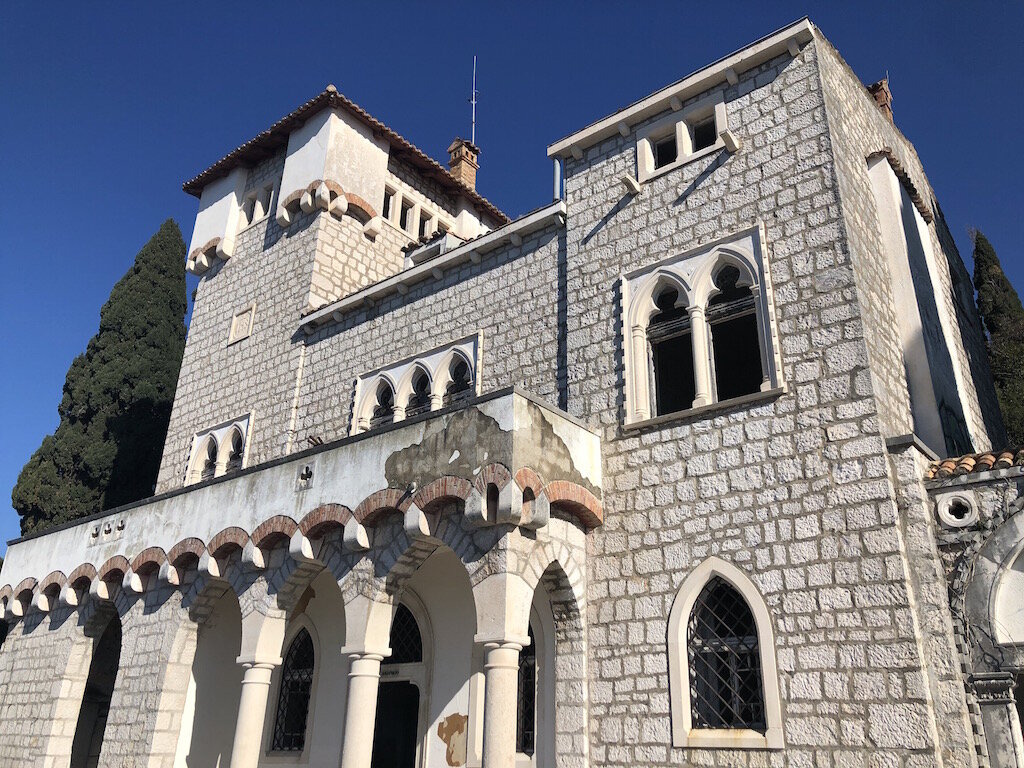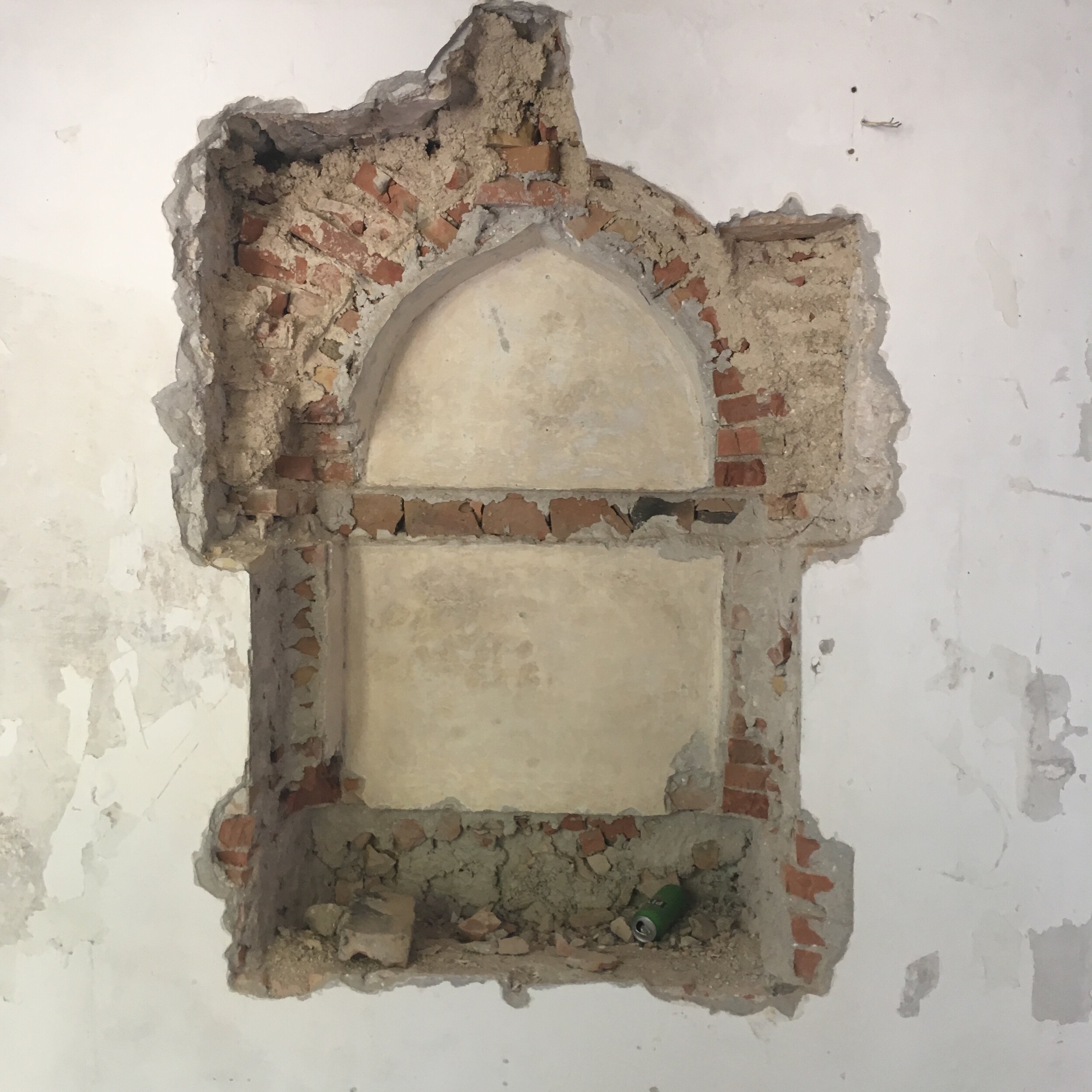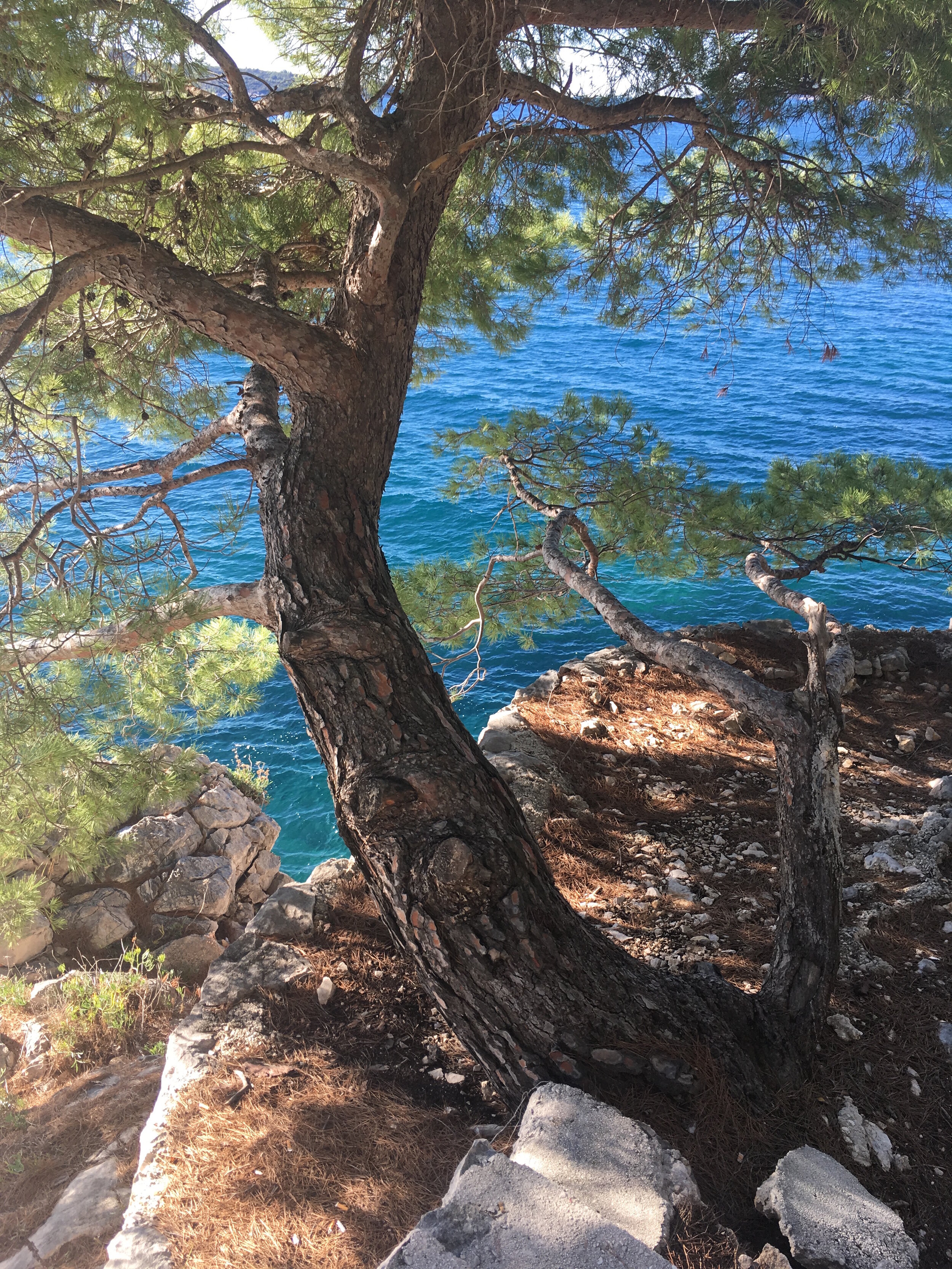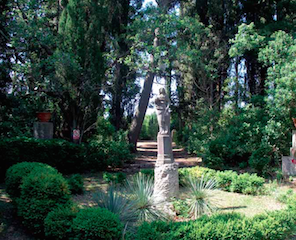In the heart of Dubrovnik, a photographic portrait of a gentleman hangs on the wall of the boutique hotel I once worked at. This image inspired a day trip up the coast to Trsteno village; where I unravelled a big story that belongs to a quiet little place.
Vito Gučetić Bosiljević (Gozze Basegli), who died in 1951, happened to be the last male descendant in a long line of Dubrovnik nobility - the Gozze dynasty. Long arms of aristocracy that reach back to the 8th century; and one of the oldest noble families in Europe.
Vito occupies a corner of one of the guest rooms from where he quietly observes the constant coming and goings. Suitcases unpacked and packed, the cleaner’s duster swiping across the the frame… holiday love, holiday fights, and holiday debauchery. Cathedral bells, jazz music mixing and fighting with the cafe bars pumping techno music - and the general cacophony of the tourist season in full swing.
The room looks out onto Dubrovnik’s cathedral, from a corner of the building that was once part of the noble Gozze - Basegli family palace; positioned in the cultural heart of the city.
While modern day Dubrovnik hummed around him, Vito was there on the wall. Him, and his family story that would unfold once I started delving into Dubrovnik history - connecting the dots, and how it all ties to the seaside village of Trsteno.
After sitting relatively quiet for many years, Trsteno has recently been experiencing an influx of visitors, thanks to the the blockbuster tv series Game of Thrones - but it was the story of the noble Gozze family that inspired me to catch a bus up the coast.
Dalmatia once again provided me with an enchanting mix of serenely beautiful nature, and a specific glance back into Dubrovnik history, complemented with a good dose of abandoned architecture that kept me wandering for hours.
SHANGRI - LA
During Dubrovnik’s Renaissance period, the nobility class were enjoying the grand lifestyles of the moment. Dubrovnik, known then as Ragusa, was prospering due to its position on the Adriatic trading routes. A vital merchant trade hub hopping with goods coming and going via ships, and due to its smart diplomacy with the Ottoman Empire, the city also formed strong lines of trade over land. It was boom time, and the ‘Golden Age’ of the city also experienced a prolific period of heightened culture, arts and architecture. Dubrovnik’s elite - the nobility class, did a good job at producing scores of scholars, artists, philosophers, and writers. Amongst their social and cultural circles they kept themselves busy passing around the popular ideas of the moment.
At the forefront of all the buzz was Humanism - the movement that emphasized amongst many things the importance of being at harmony with nature.
No better place for this to flourish than than the Dalmatian coast.
“Let only, quarrels, vanity and worries be far from here. Caves, gardens and cliffs are
guarded by tranquillity and peace.”
As the economy and culture buzzed along, everything from cathedrals to ornate fountains went up. The nobles not only built themselves grand palaces; but also had summer residences constructed outside the city’s fortified walls. These ‘country houses’ were also part of the latest trend popular in Renaissance Italy.
“villeggiatura - a rural or suburban retreat from the city that integrates cultural and agricultural uses.”
In these shining times, Dubrovnik aristocrats hosted and visited other aristocrats, hopping and hob-nobbing from garden to garden. At one point it is believed there were upwards of 200 such Renaissance gardens in the region.
Unfortunately, due to development, negligence, an earthquake, destruction from war, and the overall effects of time; much of this significant part of Dubrovnik history, life, and architecture has been lost.
Sipan Island
TRSTENO ARBORETEUM
The Trsteno Arboretum is one of the oldest, largest, and most intact examples of a Renaissance garden in Dalmatia, constructed in 1494, by none other than a Gozze- Gučetić nobleman. The gardens and residence would be enjoyed by noble descendants for centuries to follow - ancestors of our Vito of the photograph, who would be the last in the long history of the family, and Trsteno.
It was no small feat to tame the steep, rocky terrain the nobleman picked for his paradise, located about 15km from Dubrovnik. This summer residence and gardens were undeniably built with vision and passion. As there were no roads from Dubrovnik, all the materials were brought by ship, including tons of soil needed to bring life to the land.
Over the centuries the villa and gardens played host and home to generations of Gozze writers, philosophers and intellectuals who continued the Gozze-Gucetic green thumb tradition. Through their connections with the many merchant ships captains in Dubrovnik, seeds and plant specimens were procured from distant lands, resulting in a collection of exotic flora and fauna that blended with the local mediterranean nature.
If only those trees could talk!
Struck by a forest fire, and devastated during the war in the 90s, the gardens and grounds took some hard hits, requiring great efforts to bring it back to life. Now cared for by the Croatian Academy of Arts and Sciences, there is an entrance fee asked in exchange to explore the quiet paths lined with over 300 species of plants and trees.
A mystical Baroque fountain of Neptune stocked with bright orange carp is tucked in one corner, and another path leads to the small chapel, and the villa.
Trsteno village is clustered around a creek, its waters also harnessed by an aqueduct constructed for the gardens and estate that also produced food, and had its own mill.
For those that get all jazzed up about GOT, the infamous gazebo overlooking the cliffs that drop to the sea is recognizable as the spot where iconic GOT scenes were set - where the fictional nobility did all their plotting and scheming.
All was certainly peaceful the autumn day I visited. The only living being I came across was a pair of kittens sitting in the doorway of the villa.
It was when I ventured back out the gates, and turned off onto a path through the cypress trees that I found myself in a wilder, romantic feeling corner of the estate, known as Dvarica. A much later addition, and less manicured - yet this is where I felt the past resonate. Overgrown, with ruins of a wall adorned with a sundial stand stood above steps leading down to a platform and the sea far below. This place not only seemed to hold the mystical spirit of Trsteno, but also made for a perfect picnic spot to take a pause.
“‘I am proud of my neighbours, but I am even more proud
of the water, the healthy climate and the work of the
diligent master. Traveller, here you can see evident signs
of the human labour where the worthy skill perfects
the wild nature””
VILLA AURORA
AT THE OTHER END OF THE STORY
As I lunched, I scanned the crescent shaped bay below the gardens, and the seaside walk I planned to follow along the coast - until my eyes rested on what was to be my most interesting find of the day.
I spotted a tower poking out from the cypress trees, perched on a rocky point.
Graffiti scrawls over walls of peeling paint, and the parquet floors are peeling back. You can spot where the chandelier hung, and the large fireplace at the end of what must have been the dining room.
Steps lead up to more empty, torn up rooms, and further up a spiral staircase to that tower I spotted. From what must have been a pretty grand room is a view of the rugged coastline in either direction, including the treetops and terrace of the Arboretum. Across the channel lie the green Elaphite islands of Sipan and Lopud.
Below on the shore, steps lead down to the remains of a natural sea water swimming pool that was built right into the rocks. As I looked down upon the pool ruins, I imagined swimmers in their vintage bathing costumes lolling about…
Villa Aurora, constructed at the turn of the 20th century by…none other than our main protagonist of the story, our man in the photo - Vito!
He had this villa designed as his summer residence, just a short walk from the arboretum and villa of his ancestors.
Unfortunately time has not been kind. A series of historical events, combined with the fact that the villa was not passed down to any Gozze descendants has contributed to its current derelict condition. Ultimately, like many desirable properties in Croatia, it was to be taken by the Yugoslavian state and operated as a hotel during Communism, and today ownership sits in the hands of the Bosnian state.
When I was doing some digging online I found this amusing personal account from 1972, when an environmentalist and writer for the New York times stayed at Villa Aurora during his travels through what was then Yugoslavia.
“‘Last year, however, while vacationing on the Adriatic coast of Yugoslavia, I managed to find a respite from the specter of pollution: a flower — bedecked villa sitting snug alongside some of the clearest and bluest water I have ever seen…we found ourselves in Trsteno, about 15 miles north of Dubrovnik, where I noticed a small sign saying “Villa Aurora” and pointing down the hill to the water’s edge.
If we were ever going to break the modern‐hotel pattern this seemed like the time, so we drove down the road through a forested area, which on later exploration we found was an arboretum that over the years had been planted with flora brought back from all over the world by sea captains.
The building was nestled in an outcropping of rocks jutting into the sea, and the water was brighter blue than I had ever seen.
The villa was almost obscured by flowers growing everywhere: brilliant purple and red bougainvillea, bright purple wisteria, hundreds of red geraniums and large yellow dahlias. The flowers not only surrounded the villa but lined the walks leading to a small boat harbor and several coves.
Yes, we could have a room for the night, the manager said when we found him (he had been taking a nap). He showed us the room, a duplex with large bedroom and bath on the lower level and a spiral staircase leading to another room in a tower with windows looking out on all four sides. The cost for everything, including three meals, would be equal to about $8 a day for each of us, the manager said. That is for the high season of July, and August. In the other months the rate is about $2 a day less.’”




